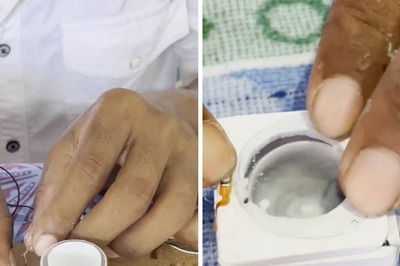
views
Chennai: The Madras High Court has expressed displeasure over the Tamil Nadu Government’s move to a build separate crematorium for the Dalit community. This move comes after the court took suo-moto cognizance of a viral video that showed a corpse being lowered from atop a 20 ft bridge.
Members of the Dalit community in Tamil Nadu’s Vellore were forced to lower the body of 46-year-old Kuppan from a 20-feet-high bridge after the upper caste community allegedly denied permission for the funeral procession to be taken through their agricultural fields.
The Madras High Court had directed the Vellore district administration to respond in the matter. In the hearing, the judge questioned why a separate crematorium is necessary for the Dalits when there is no separate hospital, government offices or police stations for the community.
The court observed that by allocating a separate cremation ground for the Dalits, the state government is encouraging caste discrimination. The next hearing of the case will be on August 28 and the court has directed the Collector to submit a report on the action that can be taken in connection with the issue.
Kuppan died in a road accident on August 16 and was to be cremated the next day after the post mortem. However, his relatives alleged that they were not allowed to take the usual route to the cremation ground as the area belonged to members of the upper caste. After upper caste’s posed an objection, Kuppan’s body was lowered from atop the bridge in a cradle and then picked up by members of his community standing below, a video of the incident showed.
Villagers claimed the bridge was constructed 10 years ago and since then, the upper castes have denied permission to Dalits to use the path. They added that this was not the first time that they were forced to lower a corpse from the bridge.
A probe was ordered into the incident after the video went viral. Revenue officials inspected the site and the district administration has decided to allot 50 cent land for the Dalit community for cremation so that such incidents are not repeated in future.


















Comments
0 comment